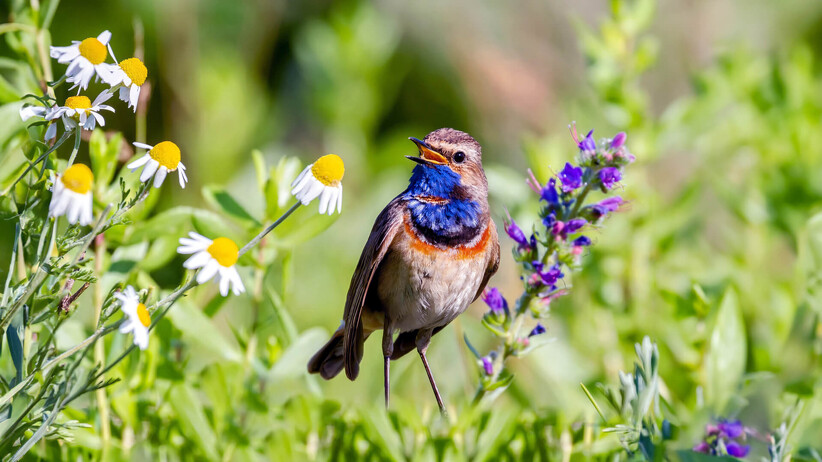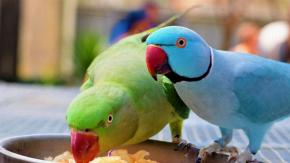Understanding birdsongs can provide valuable insights into their behaviour, emotions, and environmental changes.
Throughout this article, we will delve into the intricacies of bird communication, decode their language, and help you identify common birdsongs. You will gain a deeper understanding of the meanings behind these melodious melodies and discover how birds adapt their vocalisations to seasonal changes and environmental factors.
So let’s dive in!
Understanding Bird Communication
Birds have a rich and diverse repertoire of vocalisations that play a crucial role in their communication. Their songs and calls convey important messages to other birds, establish territories, attract mates, and warn of potential dangers. Understanding bird communication is key to unravelling these remarkable creatures' complex social dynamics and behaviours.
The Significance of Songs and Calls
Birds use songs and call as their primary means of communication. Songs, often associated with male birds, are elaborate and melodious vocalisations used to attract mates and defend territories. They are typically longer and more complex than calls, showcasing the singer’s vocal abilities and providing information about their health and vigour.
On the other hand, calls are shorter and simpler vocalisations that serve various purposes. Birds use calls to communicate alarm signals, maintain contact with their flock, signal aggression or submission, and convey specific messages related to feeding or nesting activities. Calls are generally shorter and more repetitive than songs, conveying concise information quickly and efficiently.
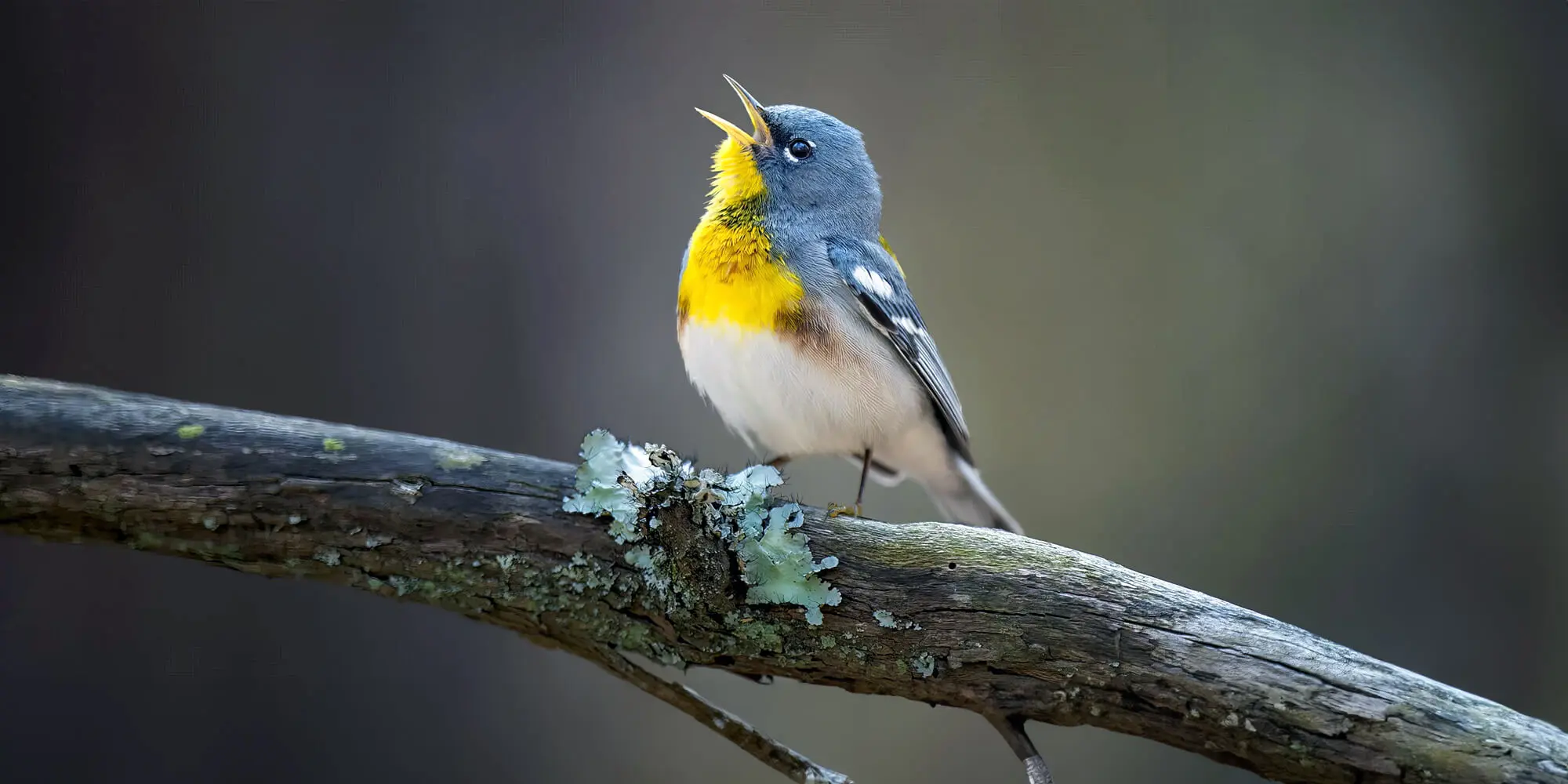
Variations in Vocalisations
Birds exhibit an astonishing array of vocalisations, each species having a unique repertoire. These vocalisations vary in pitch, rhythm, duration, and intensity, carrying distinct meanings that other birds of the same species understand. By mastering the art of interpreting these variations, bird enthusiasts can gain valuable insights into avian behaviour and interactions.
Pitch: A bird’s vocalisation pitch refers to the sound’s frequency or highness/lowness. Some birds produce high-pitched songs to signal aggression or dominance, while others use low-pitched calls to communicate submission or establish contact within their flock.
Rhythm: The rhythm of bird vocalisations refers to the pattern or tempo at which the sounds are produced. Certain species have elaborate and complex rhythmic patterns in their songs, while others have simple and repetitive rhythms in their calls.
Duration: The duration of bird vocalisations relates to the length of time a particular sound is sustained. Some birds have long and elaborate songs that can last several seconds or even minutes, while others have brief and concise calls that are emitted rapidly.
Intensity: The intensity of bird vocalisations relates to the volume or strength of the sound produced. Some birds sing or call intensely to ensure their messages are heard over long distances or in noisy environments.
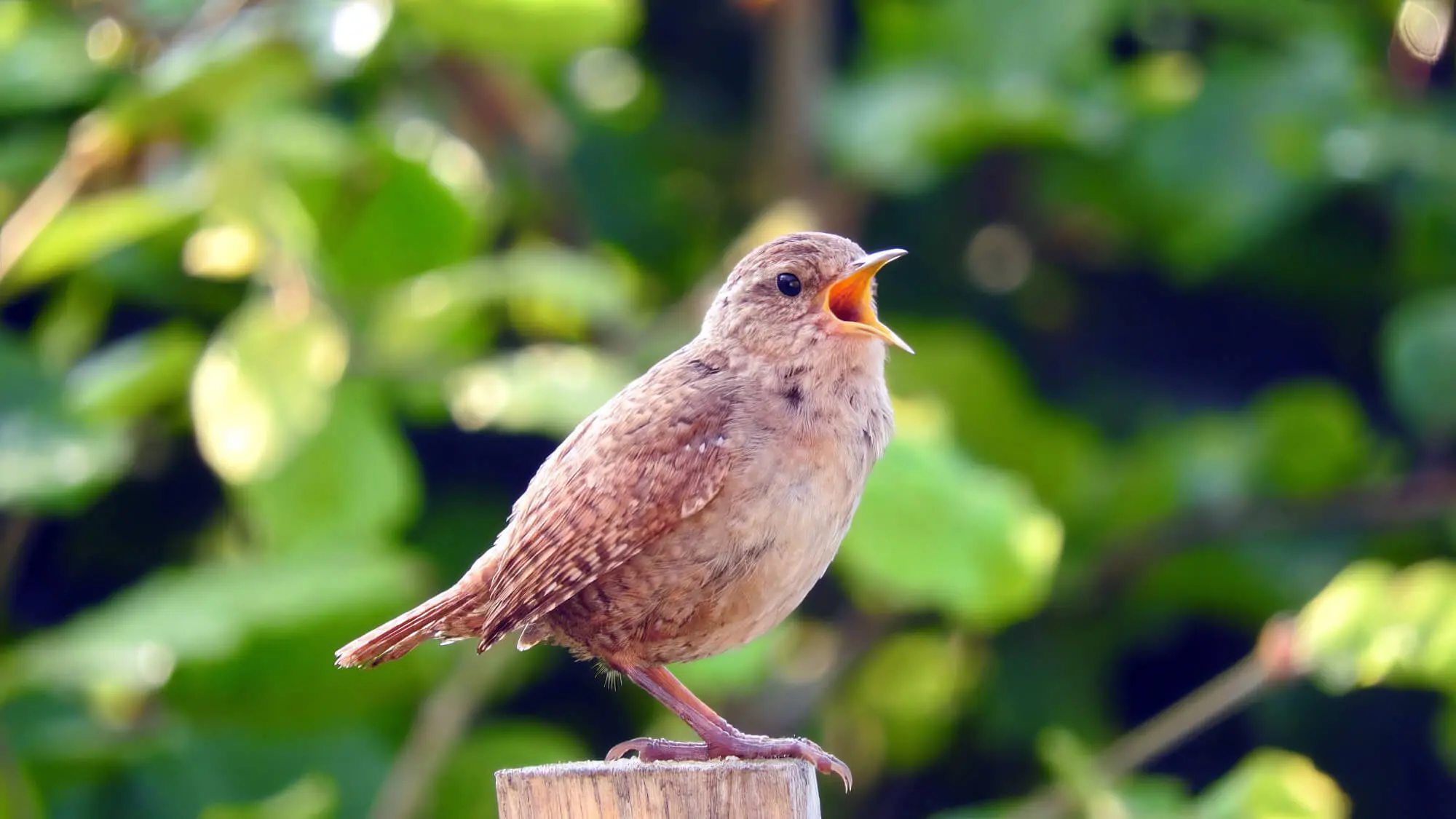
Insights into Avian Behaviour
Researchers and birdwatchers can gain valuable insights into avian behaviour by closely observing and interpreting bird vocalisations. For instance, the intensity and duration of songs can indicate the vigour and health of the singer, providing vital information during mate selection. Calls can reveal the presence of predators or the location of food sources, allowing birds to communicate and coordinate their actions effectively.
Understanding bird communication also helps in identifying and locating different bird species. Each species has a unique vocal signature, enabling bird enthusiasts to identify them with their distinct songs and calls. This knowledge enhances the birdwatching experience, as enthusiasts can recognise and appreciate the diverse avian community around them.
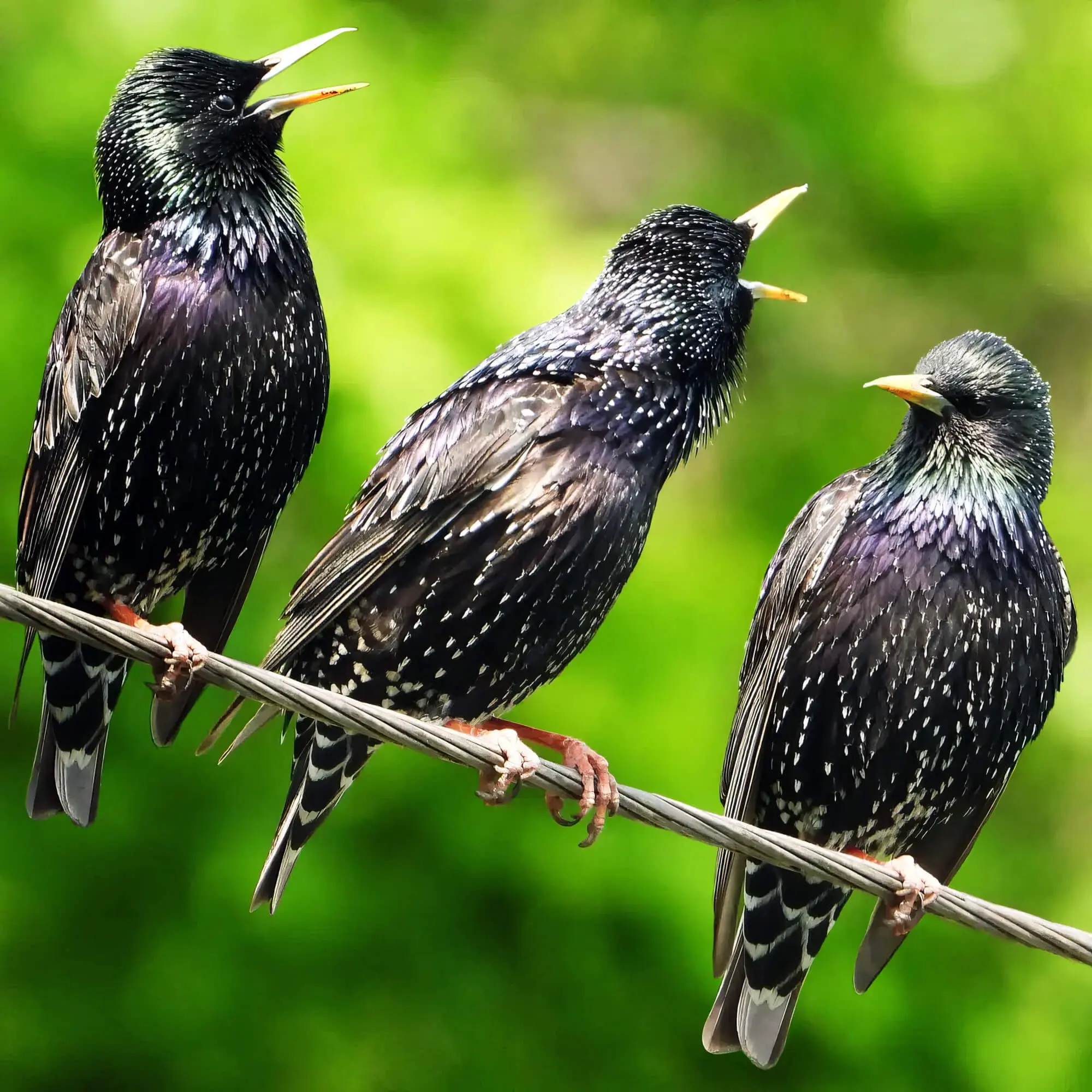
Decoding Bird Language
Bird language is a captivating form of communication that goes beyond our feathered friends' melodious songs and calls. It involves understanding the subtle nuances in the variations of their vocalisations and deciphering the messages they convey. By delving into the intricacies of bird language, we can unlock a deeper understanding of the avian world and its fascinating dynamics.
Types of Birdsongs and Their Meanings
Birdsongs can be classified into different types, each serving a specific purpose in avian communication. Understanding these types and their meanings is crucial in decoding the messages hidden within their melodious tunes.
- Territorial Songs: Male birds often use territorial songs to establish and defend their breeding territories. These songs serve as vocal markers that signal their presence, ward off potential competitors, and attract mates.
- Mating Calls: Mating calls are specific vocalisations used by male and female birds during courtship rituals. These calls are designed to attract a potential mate, showcasing the singer’s fitness and suitability as a partner.
- Alarm Calls: Birds have distinct alarm calls to alert others of potential dangers or threats. These sharp and attention-grabbing calls communicate the presence of predators, prompting other birds to take evasive action or seek safety.
- Contact Calls: Contact calls are vocalisations birds use to maintain communication and cohesion within their flock. These calls help birds stay in touch while foraging or during flight, ensuring the group remains together and coordinated.
- Nestling Calls: Nestling calls are vocalisations produced by young birds in the nest. These calls serve as requests for food from their parents and aid in parent-offspring recognition within a crowded nest.
Interpreting the Messages
Decoding bird language requires careful observation and understanding of the context in which the vocalisations are made. While each species may have its unique variations, there are some general guidelines to help interpret the messages conveyed by birds.
- Pitch and Intensity: Higher-pitched songs and calls often indicate aggression or territorial dominance, while lower-pitched vocalisations may signal submission or an invitation to approach.
- Rhythm and Tempo: The rhythmic patterns and tempo of vocalisations can provide insights into the bird’s emotional state. Faster and more energetic sequences may indicate excitement or aggression, while slower and more deliberate patterns may convey calmness or contentment.
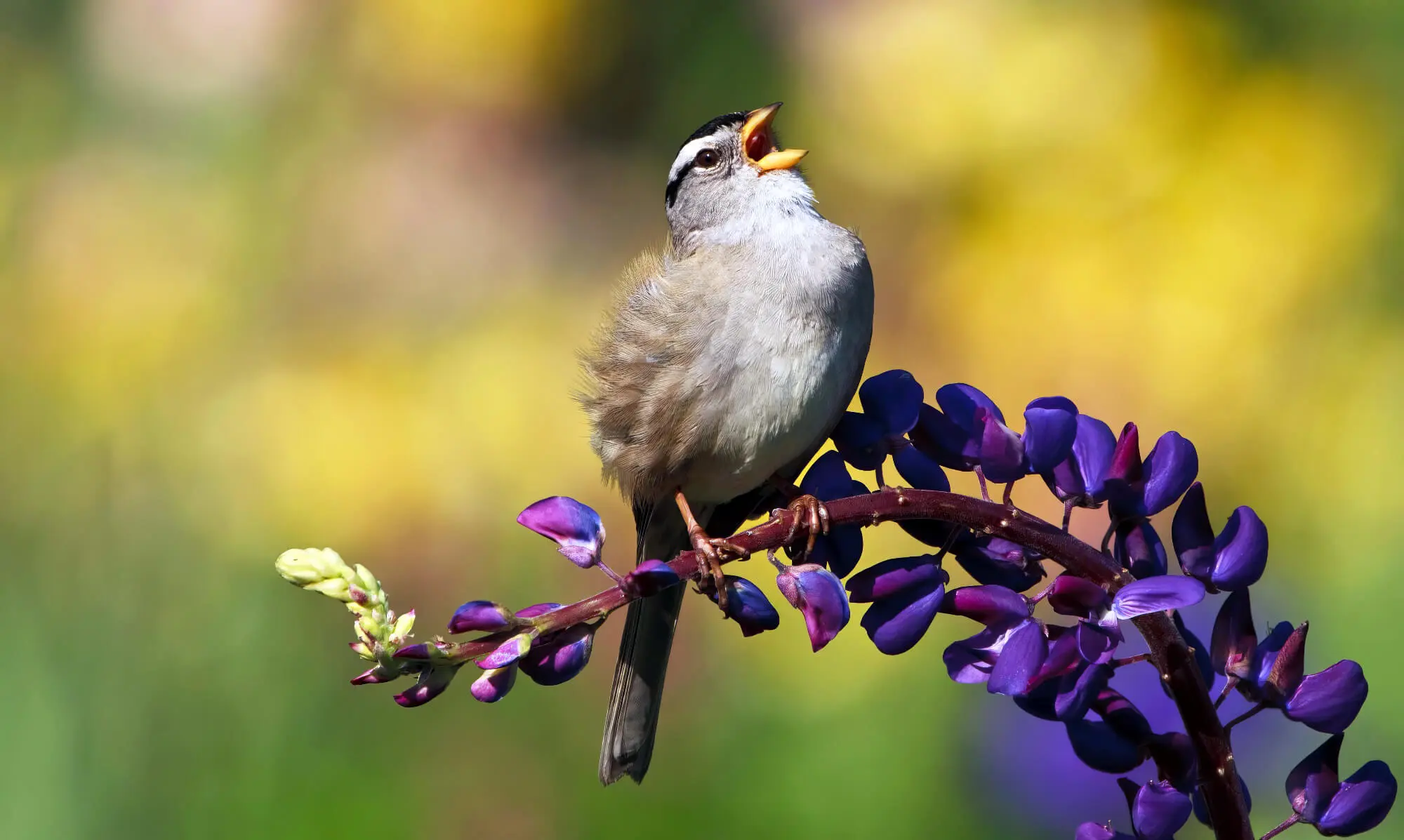
- Repetition and Sequences: Repetitive vocalisations, such as repeated phrases or series of notes, may signal a specific message, such as a call for assistance or a warning. Paying attention to the pattern and sequence of these repetitions can reveal important information.
- Context and Behaviour: Observing the bird’s behaviour and vocalisations can enhance the understanding of the message. For example, an alarm call accompanied by an abrupt change in posture or flight pattern may indicate a nearby predator.
Birdsongs and Seasonal Changes
Birdsongs are delightful to the ear and reflect the dynamic relationship between birds and their environment. These melodious tunes undergo significant transformations as seasons change, offering a unique window into the ever-evolving natural world. This section will explore the fascinating connection between birdsongs and seasonal variations.
Adaptations to Breeding Seasons
Birds rely on songs and call as an integral part of their breeding behaviour. As the seasons transition, so do the breeding patterns of different bird species. During the breeding season, male birds often sing vigorously to establish territories, attract mates, and communicate their availability for reproduction.
- Spring Songs: Spring is a season of heightened activity and exuberant birdsongs. Many bird species, such as the melodious warblers and vibrant finches, burst into song during this time, aiming to claim territories and court potential mates.
- Summer Serenades: Some bird species may reduce their singing activities as summer arrives. This is because they have already established territories and are focused on incubating eggs, feeding nestlings, and protecting their offspring. However, some species, like the cheerful wrens and larks, continue serenading the landscape with melodious tunes.
- Autumn Calls: During autumn, bird vocalisations may take on a different character. Some birds emit contact calls to maintain flock cohesion as they prepare for migration or gather in feeding flocks. The calls may coordinate group movements and facilitate social interactions.
Migratory Songs
Migration is an awe-inspiring phenomenon observed in many bird species. Birds embark on long-distance journeys guided by instinct and environmental cues. Their songs are essential during migration, serving as a means of communication and navigation.
- Spring Migration: During spring migration, birds returning from their wintering grounds produce a chorus of songs as they travel northward. These songs not only serve to communicate within their species but also act as territorial markers along their migratory routes.
- Autumn Migration: In autumn, birds preparing for migration often sing less frequently. This reduction in singing is attributed to their focus on accumulating energy reserves and navigating the challenges of long-distance travel. However, occasional migratory calls can still be heard as flocks gather and depart.
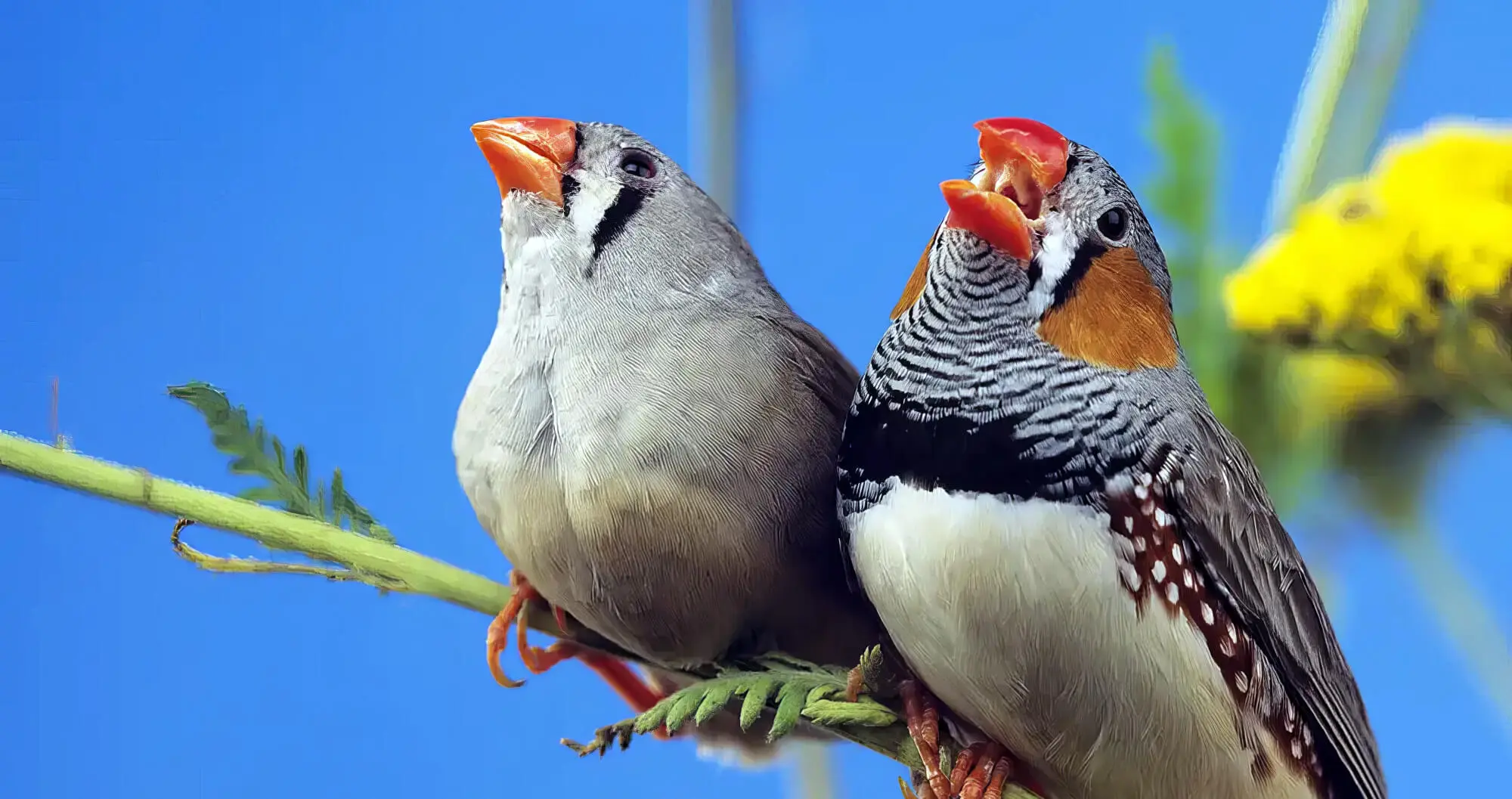
Changes in Song Repertoire
Seasonal variations can also be observed in individual birds' specific songs and vocalisations. Some bird species exhibit different song repertoires during different times of the year, reflecting their adaptive strategies and changing social dynamics.
- Breeding Songs: Male birds often have a repertoire of songs to attract mates and establish territories during the breeding season. These songs are typically complex and distinctive, showcasing the singer’s fitness and genetic quality.
- Non-breeding Songs: Outside the breeding season, some birds may produce simpler, abbreviated versions of their breeding songs or switch to different vocalisations altogether. These non-breeding songs may serve social functions or maintain the bird’s presence within its wintering or non-breeding habitat.
Birdsongs and Environmental Factors
Birdsongs are not only a product of avian communication but are also influenced by the surrounding environment. Environmental factors play a crucial role in shaping the melodies and patterns of bird vocalisations. In this section, we will delve into the impact of habitat, climate, and human activities on the captivating world of birdsongs.
Habitat and Birdsongs
The habitat in which birds reside greatly influences their vocal behaviour. Different habitats provide distinct acoustic environments, shaping how birds communicate and adapt their songs to transmit messages effectively.
- Woodland Wonders: Forested habitats create a rich sonic environment for birdsongs with dense vegetation and diverse tree species. Warblers, thrushes, and woodpeckers thrive in these habitats, producing a tapestry of melodious tunes that reverberate through the trees.
- Open Grasslands: Open grasslands and savannas offer a different soundscape. Birds like meadowlarks and pipits take advantage of the expansive spaces to produce far-carrying songs that can be heard over long distances, allowing for effective territory establishment and communication.
- Wetland Symphony: Wetland habitats, such as marshes and swamps, host a variety of water-associated bird species. From the resonant calls of waterfowl to the melodious trills of marsh wrens, wetlands are filled with unique songs that resonate through the aquatic landscape.
Climate and Birdsongs
Climate factors, such as temperature and rainfall, can also influence birdsongs. These variations in climatic conditions can impact the timing, intensity, and structure of avian vocalisations.
- Breeding Phenology: Changes in climate patterns, such as shifts in temperature and rainfall, can affect the timing of breeding activities for birds. Consequently, the onset of breeding seasons may vary, altering the timing and duration of birdsongs associated with courtship and territorial displays.
- Temperature Gradient: Birdsongs can be influenced by temperature gradients within their habitats. Warmer regions may exhibit more intense and prolonged singing activities, while cooler areas may have shorter and less frequent vocalisations due to reduced energy availability and thermoregulatory constraints.
- Rainfall Patterns: Rainfall events can influence the volume and frequency of birdsongs. Some bird species become more vocal during or after rainfall, using the dampened acoustic environment to enhance the transmission of their calls. Conversely, heavy rain and strong winds may temporarily suppress singing activity.
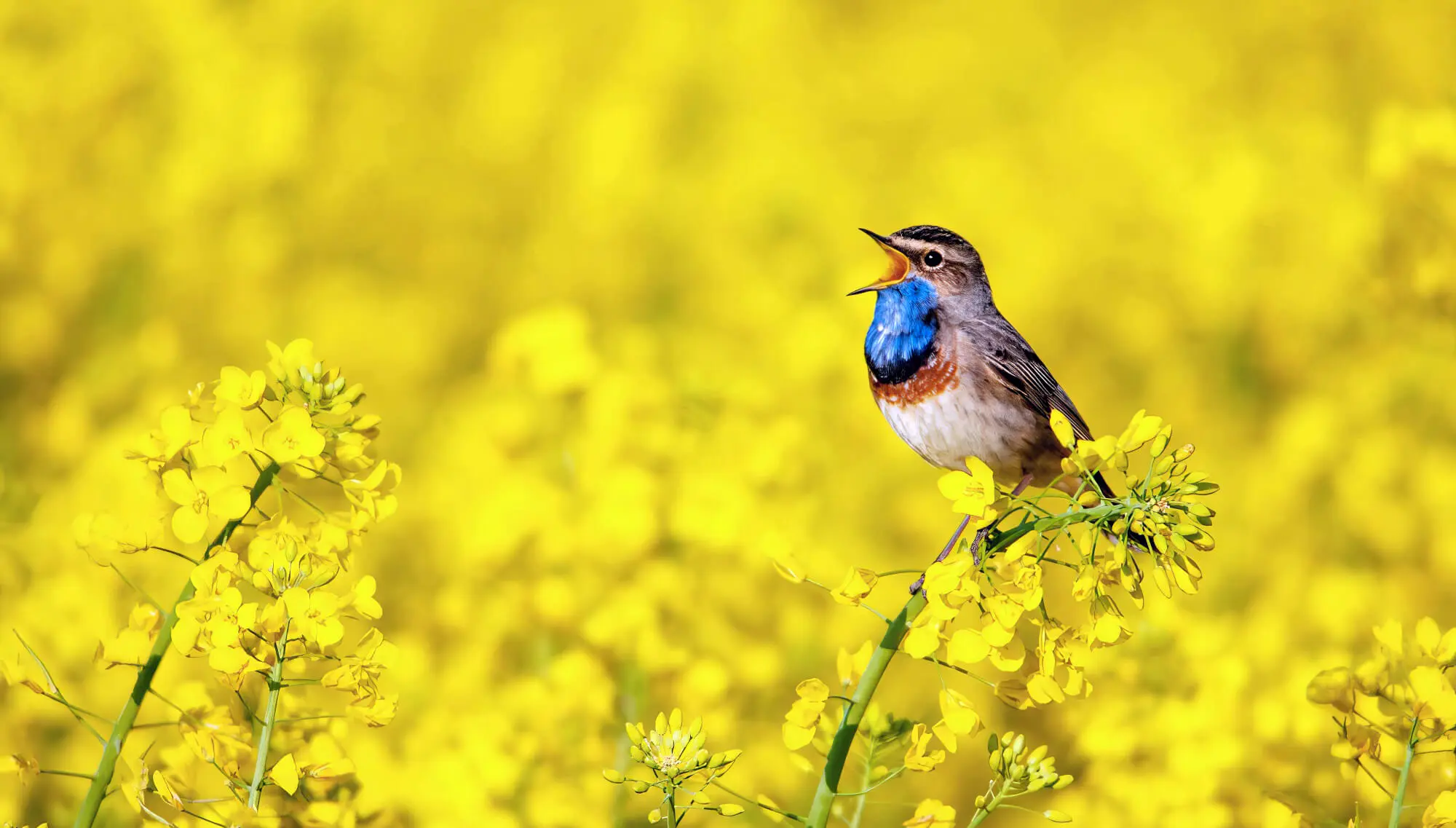
Human Impact on Birdsongs
Human activities can significantly impact the acoustic environment, affecting birdsongs and their communication patterns. Understanding these impacts is crucial for conservation efforts and preserving the integrity of avian habitats.
- Habitat Loss: The loss and fragmentation of natural habitats due to urbanisation, deforestation, and agricultural expansion directly impact bird populations. With reduced available habitat, birds may need help finding suitable territories and resources, resulting in altered singing behaviour and diminished species diversity.
- Noise Pollution: Human-generated noise, such as traffic, construction, and industrial activities, can disrupt avian communication. High levels of ambient noise make it harder for birds to detect and interpret songs, leading to changes in song characteristics and reduced reproductive success in some species.
- Conservation Efforts: On the positive side, conservation initiatives can help mitigate the negative effects of human activities on birdsongs. Restoring habitats, creating protected areas, and implementing sound management practices preserve avian acoustic environments and promote healthy vocalisation patterns.
Exploring the Fascinating Language of Birdsongs
Understanding the intricate relationship between birdsongs and environmental factors provides us with valuable insights into the challenges faced by bird populations and the importance of preserving their habitats.
As we conclude this journey, we invite you to embrace the captivating realm of birdsongs. Connect with Planet Pet, Australia’s premier online pet store, to embark on your birding adventure. Our team of experts is ready to assist you in exploring the wonders of avian communication and the beauty of our feathered friends.
Unlock the secrets of birdsongs, appreciate their melodies, and let their language inspire your connection with nature. Shop now and embark on a harmonious journey with Planet Pet.

